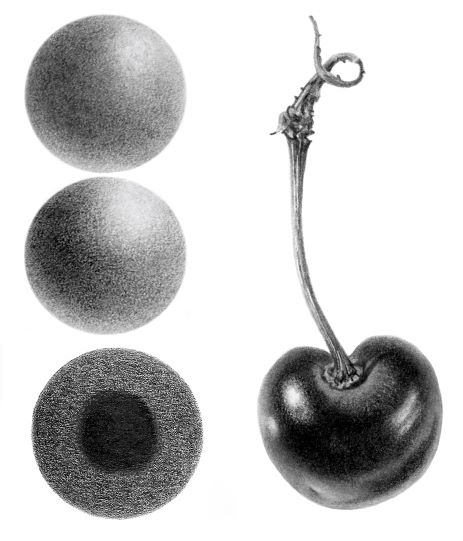A recent article by Robert McKinley on www.artistsnetwork.com addressing the topic of blending on paper (or canvas) to merge value transitions, caught my attention. And it’s not just because he references Leonardo da Vinci’s famous ‘sfumato’ blending application but also because he raises an important matter relevant to graphite technique—the potential over-use of blending. And equally important, he cautions against allowing the allure of blending to substitute for the acquisition of refined technique skills and mark-making when edge definition and clarity are essential.
In my three-part series of e-booklets and online workshops on graphite, I was very careful about the point at which I introduced the technique of blending for creating seamless and flowing gradations of values from light to dark. Mechanical blending (never use a finger) is a widely-used practice. But, I only recommend blending methods when using the softer B-grade pencils where transitions into darker values become necessary for smooth continuous tone.
In the first of the three e-booklets, The Value of Colour – Pale hues and Soft neutrals, I invite readers to explore the H-grade pencils to develop technique rather than excessive reliance on blending. I emphasize how important it is to slow down, enjoy this meditative medium and, above all, learn how to gently layer the harder pencils for the softer and subtle pale value shifts. It means engaging with the paper surface directly with the sharpened tip of the pencil. This is essential to success with graphite (and coloured pencils). Blending should never become an attempt to overcome the unevenness of poor technique or to speed up the process.
In recent workshops, many participants, even those with years of experience, confessed that using H-grade pencils was a new experience. They had never before enjoyed the delicacy achieved in the layering of the H-grades that is so useful for accurately capturing highlight and reflected light areas. This process needs to be purely technique dependent without resorting to blending. The use of H-grade pencils in this manner represents an opportunity to acquire the essential fundamentals of excellent graphite technique.
I only introduce blending tools in the second of the three e-booklets, The Value of Colour – Dark & Deep, when I delve into various interesting graphite pencils for the deeper side of the value scale. Unfortunately, the points of softer pencils dull very quickly and easily find paper texture. This is when blending to get rid of the paper texture becomes an option for many artists. Interestingly, an accomplished graphite artist, Pamela Mahaffey Rossing, featured in my ‘Dark and Deep’ booklet, will apply upwards of ten layers of softer B-grade pencils and avoid the blending option altogether. She prefers the process of mark making over relying on a ‘smoky’ (sfumato) application.
Ultimately, the process of blending is a choice. Your choice. But if you use it, you should do so judiciously and only at the right time and place. It is of course important to eliminate harsh outlines from your work but not with a foggy blurriness that causes loss of definition. And it should never be a substitute for good technique.

